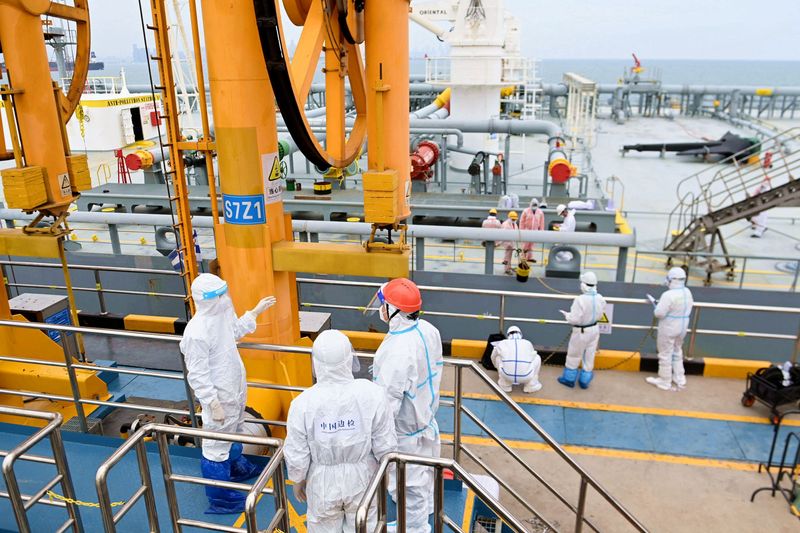
By Chen Aizhu and Siyi Liu
SINGAPORE/BEIJING (Reuters) -China’s Shandong Port Group issued a notice on Monday banning U.S.-sanctioned oil vessels from calling into its ports on the country’s east coast, three traders said.
The move comes weeks after Washington imposed further sanctions on companies and ships that deal with Iranian oil and could slow shipments to the world’s largest oil importing nation, traders say.
It is also expected to drive up shipping costs for independent refiners in Shandong, the main buyers of discounted sanctioned crude from Iran, Russia and Venezuela.
U.S. President-elect Donald Trump, who will be inaugurated on Jan. 20, is expected to further ramp up sanctions on Iran and its oil exports to curb its nuclear programme.
The notice, obtained from two of the traders and confirmed by a third, forbids ports to dock, unload or provide ship services to vessels on the Office of Foreign Assets Control list managed by the U.S. Department of the Treasury.
Shandong Port oversees major ports on China’s east coast including Qingdao, Rizhao and Yantai, which are major terminals for importing sanctioned oil.
Shandong Port did not respond to calls or an email from Reuters requesting comment.
In a second notice on Tuesday, also reviewed by Reuters, Shandong Port said it expects the shipping ban to have a limited impact on independent refiners as most of the sanctioned oil is being carried on non-sanctioned tankers.
The ban came after sanctioned tanker Eliza II unloaded at Yantai Port in early January, the notice said.
In December, eight very large crude carriers, with a capacity of two million barrels each, discharged mostly Iranian oil at Shandong, estimates from tanker tracker Vortexa showed.
The vessels included Phonix, Vigor, Quinn and Divine, which are all sanctioned by the U.S. Treasury.
A switch to using non-sanctioned ships could drive up costs for refiners in Shandong, which have been struggling with poor margins and sluggish demand, traders said.

The price of Iranian crude sold to China hit the highest in years last month as fresh U.S. sanctions tightened shipping capacity and drove up logistics costs.
Prices of Russian oil, which rose to about a two-year high, could remain supported as the Biden administration plans to impose more sanctions on Russia over its war on Ukraine.
This post is originally published on INVESTING.



